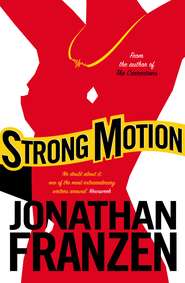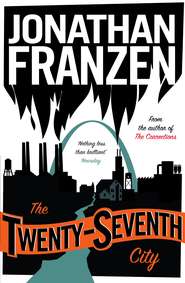По всем вопросам обращайтесь на: info@litportal.ru
(©) 2003-2024.
✖
The Discomfort Zone: A Personal History
Настройки чтения
Размер шрифта
Высота строк
Поля
After the war, he returned to his childhood neighborhood, lived with his father, became intensely involved in a Christian youth group, and learned to draw kids. For the rest of his life, he virtually never drew adults. He avoided adult vices—didn’t drink, didn’t smoke, didn’t swear—and, in his work, he spent more and more time in the imagined yards and sandlots of his childhood. He was childlike, too, in the absoluteness of his scruples and inhibitions. Even after he became famous and powerful, he was reluctant to demand a more flexible layout for “Peanuts,” because he didn’t think it was fair to the papers that had been his loyal customers. He also thought it was unfair to draw caricatures. (“If somebody has a big nose,” he said, “I’m sure that they regret the fact they have a big nose and who am I to point it out in gross caricature?”) His resentment of the name “Peanuts,” which his editors had given the strip in 1950, was still fresh at the end of his life. “To label something that was going to be a life’s work with a name like ‘Peanuts’ was really insulting,” he told an interviewer in 1987. To the suggestion that thirty-seven years might have softened the insult, Schulz replied: “No, no. I hold a grudge, boy.”
Was Schulz’s comic genius the product of his psychic wounds? Certainly the middle-aged artist was a mass of resentments and phobias that seemed attributable, in turn, to early traumas. He was increasingly prone to attacks of depression and bitter loneliness (“Just the mention of a hotel makes me turn cold,” he told his biographer), and when he finally broke away from his native Minnesota he set about replicating its comforts in California, building himself an ice rink where the snack bar was called “Warm Puppy.” By the 1970s, he was reluctant even to get on an airplane unless someone from his family was with him. This would seem to be a classic instance of the pathology that produces great art: wounded in his adolescence, our hero took permanent refuge in the childhood world of “Peanuts.”
But what if Schulz had chosen to become a toy salesman, rather than an artist? Would he still have lived such a withdrawn and emotionally turbulent life? I suspect not. I suspect that Schulz the toy salesman would have gutted his way through a normal life the same way he’d gutted out his military service. He would have done whatever it took to support his family—begged a Valium prescription from his doctor, had a few drinks at the hotel bar.
Schulz wasn’t an artist because he suffered. He suffered because he was an artist. To keep choosing art over the comforts of a normal life—to grind out a strip every day for fifty years; to pay the very steep psychic price for this—is the opposite of damaged. It’s the sort of choice that only a tower of strength and sanity can make. The reason that Schulz’s early sorrows look like “sources” of his later brilliance is that he had the talent and resilience to find humor in them. Almost every young person experiences sorrows. What’s distinctive about Schulz’s childhood is not his suffering but the fact that he loved comics from an early age, was gifted at drawing, and had the undivided attention of two loving parents.
Every February, Schulz drew a strip about Charlie Brown’s failure to get any valentines. Schroeder, in one installment, chides Violet for trying to fob off a discarded valentine on Charlie Brown several days after Valentine’s Day, and Charlie Brown shoves Schroeder aside with the words “Don’t interfere—I’ll take it!” But the story Schulz told about his own childhood experience with valentines was very different. When he was in first grade, he said, his mother helped him make a valentine for each of his classmates, so that nobody would be offended by not getting one, but he felt too shy to put them in the box at the front of the classroom, and so he took them all home again to his mother. At first glance, this story recalls a 1957 strip in which Charlie Brown peers over a fence at a swimming pool full of happy kids and then trudges home by himself and sits in a bucket of water. But Schulz, unlike Charlie Brown, had a mother on duty—a mother to whom he chose to give his entire basket. A child deeply scarred by a failure to get valentines would probably not grow up to draw lovable strips about the pain of never getting valentines. A child like that—one thinks of R. Crumb—might instead draw a valentine box that morphs into a vulva that devours his valentines and then devours him, too.
This is not to say that the depressive and failure-ridden Charlie Brown, the selfish and sadistic Lucy, the philosophizing oddball Linus, and the obsessive Schroeder (whose Beethoven-sized ambitions are realized on a one-octave toy piano) aren’t all avatars of Schulz. But his true alter ego is clearly Snoopy: the protean trickster whose freedom is founded on his confidence that he’s lovable at heart, the quick-change artist who, for the sheer joy of it, can become a helicopter or a hockey player or Head Beagle and then again, in a flash, before his virtuosity has a chance to alienate you or diminish you, be the eager little dog who just wants dinner.
I never heard my father tell a joke. Sometimes he reminisced about a business colleague who ordered a “Scotch and Coke” and a “flander” fillet in a Dallas diner in July, and he could laugh at his own embarrassments, his impolitic remarks at the office, his foolish mistakes on home-improvement projects; but there wasn’t a silly bone in his body. He responded to other people’s jokes with a wince or a grimace. As a boy, I told him a story I’d made up about a trash-hauling company cited for “fragrant violations.” He shook his head, stone-faced, and said, “Not plausible.”
In another archetypical “Peanuts” strip, Violet and Patty are abusing Charlie Brown in vicious stereo: “GO ON HOME! WE DON’T WANT YOU AROUND HERE!” He trudges away with his eyes on the ground, and Violet remarks, “It’s a strange thing about Charlie Brown. You almost never see him laugh.”
The few times he ever played catch with me, my father threw the ball like a thing he wanted to get rid of, a piece of rotten fruit, and he snatched at my return throws with an awkward pawing motion. I never saw him touch a football or a Frisbee. His two main recreations were golf and bridge, and his enjoyment of them consisted in perpetually reconfirming that he was useless at the one and unlucky at the other.
He only ever wanted not to be a child anymore. His parents were a pair of nineteenth-century Scandinavians caught up in a Hobbesian struggle to prevail in the swamps of north-central Minnesota. His popular, charismatic older brother drowned in a hunting accident when he was still a young man. His nutty and pretty and spoiled younger sister had an only daughter who died in a one-car accident when she was twenty-two. My father’s parents also died in a one-car accident, but only after regaling him with prohibitions, demands, and criticisms for fifty years. He never said a harsh word about them. He never said a nice word, either.
The few childhood stories he told were about his dog, Spider, and his gang of friends in the invitingly named little town, Palisade, that his father and uncles had constructed among the swamps. The local high school was eight miles from Palisade. In order to attend, my father lived in a boardinghouse for a year and later commuted in his father’s Model A. He was a social cipher, invisible after school. The most popular girl in his class, Romelle Erickson, was expected to be the valedictorian, and the school’s “social crowd” was “shocked,” my father told me many times, when it turned out that the “country boy,” “Earl Who,” had claimed the title.
When he registered at the University of Minnesota, in 1933, his father went with him and announced, at the head of the registration line, “He’s going to be a civil engineer.” For the rest of his life, my father was restless. In his thirties, he agonized about whether to study medicine; in his forties, he was offered a partnership in a contracting firm which, to my mother’s ever-lasting disappointment, he wasn’t bold enough to accept; in his fifties and sixties, he admonished me never to let a corporation exploit my talents. In the end, though, he spent fifty years doing exactly what his father had told him to do.
After he died, I came into a few boxes of his papers. Most of the stuff was disappointingly unrevealing, and from his early childhood there was nothing except one brown envelope in which he’d saved a thick bundle of valentines. Some of them were flimsy and unsigned, some of them were more elaborate, with crepe-paper solids or 3-D foldouts, and a few from “Margaret” were in actual envelopes; the styles ranged from backwoods Victorian to 1920s art deco. The signatures—most of them from the boys and girls his age, a few from his cousins, one from his sister—were in the crude handwriting of elementary school. The gushiest profusions came from his best friend, Walter Anderson. But there weren’t any valentines from his parents, or any other cards or tokens of their love, in any of the boxes.
My mother called him “oversensitive.” She meant that it was easy to hurt his feelings, but the sensitivity was physical as well. When he was young, a doctor gave him a pinprick test that showed him to be allergic to “almost everything,” including wheat, milk, and tomatoes. A different doctor, whose office was at the top of five long flights of stairs, greeted him with a blood-pressure test and immediately declared him unfit to fight the Nazis. Or so my father told me, with a shrugging gesture and an odd smile (as if to say, “What could I do?”), when I asked him why he hadn’t been in the war. Even as a teenager, I sensed that his social awkwardness and sensitivities had been aggravated by not serving. He came from a family of pacifist Swedes, however, and was very happy not to be a soldier. He was happy that my brothers had college deferments and good luck with the lottery. Among his war-vet colleagues, he was such an outlier on the subject of Vietnam that he didn’t dare talk about it. At home, in private, he aggressively avowed that, if Tom had drawn a bad number, he personally would have driven him to Canada.
Tom was a second-born in the mold of my father. He got poison ivy so bad it was like measles. He had a mid-October birthday and was perennially the youngest kid in his classes. On his only date in high school, he was so nervous that he forgot his baseball tickets and left the car idling in the street while he ran back inside; the car rolled down the hill and punched through an asphalt curb, clearing two levels of a terraced garden, and came to rest on a neighbor’s front lawn.
To me, it simply added to Tom’s mystique that the car was not only still drivable but entirely undamaged. Neither he nor Bob could do any wrong in my eyes. They were expert whistlers and chess players, amazing wielders of tools and pencils, and the sole suppliers of whatever anecdotes and data I was able to impress my friends with. In the margins of Tom’s school copy of A Portrait of the Artist as a Young Man, he drew a two-hundred-page riffle-animation of a stick-figure pole-vaulter clearing a hurdle, landing on his head, and being carted away on a stretcher by stick-figure E.M.S. personnel. This seemed to me a master-work of filmic art and science. But my father had told Tom: “You’d make a good architect, here are three schools to choose from.” He said: “You’re going to work for Sverdrup.”
Tom was gone for five days before we heard from him. His call came on a Sunday after church. We were sitting on the screen porch, and my mother ran the length of the house to answer the phone. She sounded so ecstatic with relief I felt embarrassed for her. Tom had hitchhiked back to Houston and was doing deep-fry at a Church’s fried-chicken establishment, hoping to save enough money to join his best friend in Colorado. My mother kept asking him when he might come home, assuring him that he was welcome and that he wouldn’t have to work at Sverdrup; but I could tell, without even hearing Tom’s responses, that he wanted nothing to do with us now.
The purpose of a comic strip, Schulz liked to say, was to sell newspapers and to make people laugh. His formulation may look self-deprecating at first glance, but in fact it is an oath of loyalty. When I. B. Singer, in his Nobel address, declared that the novelist’s first responsibility is to be a storyteller, he didn’t say “mere storyteller,” and Schulz didn’t say “merely make people laugh.” He was loyal to the reader who wanted something funny from the funny pages. Just about anything—protesting against world hunger; getting a laugh out of words like “nooky”; dispensing wisdom; dying—is easier than real comedy.
Вы ознакомились с фрагментом книги.
Приобретайте полный текст книги у нашего партнера:
Приобретайте полный текст книги у нашего партнера:
















